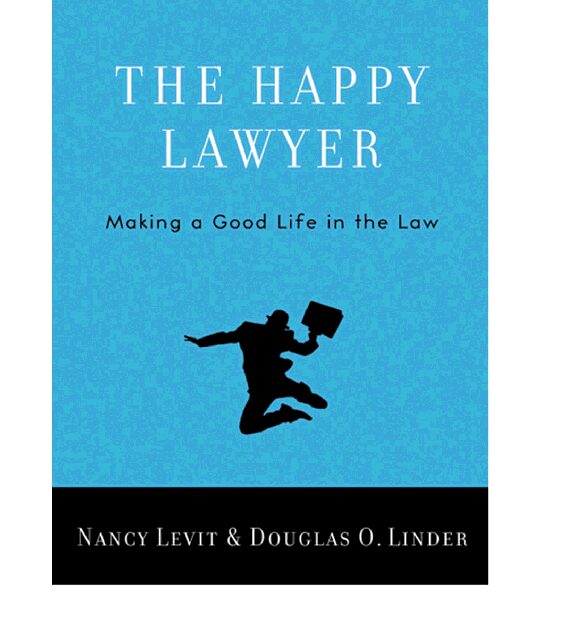Let us start with an oft-made assumption in the social “science” of happiness studies and advising.
The idea is that there is a “happiness set-point” for each person. A point, and therefore that “point” is “set” in the sense that it does not change. That’s the reason it’s called a “set point”; it’s fixed; if the point were not fixed, it would not be a set point.
The existence of a real happiness set point is that no matter how hard one works at improvement, the level of happiness will not change. We all know that this is not true. (Of course, the existence of a set point would also entail that one could not make one’s self less happy, and we all know that idea to be absurd.)
So there is no set point. There is, however, a “quasi- [or, “weak”] set point,” meaning that one will tend toward that point, either from being above it or being below it. The trouble with this idea is that it is obvious that the tendency will be distinctive for different individuals (or classes of individuals). This difference is complex. For example, what it takes to speed up or slow down the tendency will differ. In addition, the length of time for the tendency to move from point A to the setpoint will vary. And it will vary for different people depending on the circumstances.
Moreover, there may be multiple setpoints for any one individual. Suppose a person has five different powerful emotions which don’t depend on each other completely. One of these might be wrath, another might be euphoria, a third might be emotions associated with laziness, the joyous emotions that come with, say, arson, and so forth. Each of these elements of a complex system may have a different set point. And they may be interdependent, so there may be what might be called “complex interdependent set points.” They are still set points, however.
The stronger the tendency to return, together with its likelihood, together with other factors, determine the nature and probability of success in happiness improvement. Of course, if there are set points and if there is always a return to them, and if the return happens relatively quickly, it is not clear how reasonable attempts at happiness improvement really are. Trying such a thing may be what some social scientists, namely economists, call “inefficient.” Who knows. Maybe knowing it can be done and that one’s set point is not self-determined may be a relief.
Substantial changes, which do not revert, completely undermine the whole idea of set points. A conscious sense of well-being and a sense of its opposite can be accurate; they can be achieved; there can be positive and negative changes. None of this can be true if there really are set points. It is true, of course, that all people start out on the happiness scale, and many of them start out at different points. Most, though not all of them, can change with the right influences. The whole enterprise is to find the right stimuli. (Sadly, in many cases of no-change-quite-likely, the problem is one of biology or physiology about which nothing can be done. Even where the idea of fixed points at the level of biologically caused misery, there is–overtime–probably some combination of biological prescriptions–drugs–which can change things to some extent at least, and improve the situation without collateral damage.
Consider the following which doesn’t involve such drastic physically-based curses. Suppose a person’s set point determines 80% of his happiness level, as at least one study has said it can be (Levit & Linder, THE HAPPY LAWYER p. 133 n 25, reporting on contemporary “findings”), and further suppose that the person in question has a very low happiness position, say 2 on a scale of 1 to 10 the probability of happiness improvement is very low (Do the arithmetic for yourself.) Of course, most people state in interviews that their happiness level is above average–an idea in and of itself, and probably false. (This excellent, in its way, and a restrained book written by these two professors was discussed at length in this sequence of blog-essay previously.)
In any case, really unhappy people don’t really have a chance of getting to continual enjoyment, much less exuberance, and much less joy, if the setpoint has a good deal to do with continual happiness levels. Of course, professionals of some sort (maybe) specializing in and perhaps promoting happiness treatment, the sales of books, or both have every interest in ignoring this fact, or, if they don’t ignore it, they suppress it for financial reasons.
This whole idea has come to have a good deal of popularity in the “School of Positive Psychology,” an approach that principally studies the positive side of the human psyche, as opposed to the negative, which, the School says, includes a large group of psychologist includes Freud and other students of the bleak and troubled side of human nature without their having a general intellectual commitment to the proposition that things can always be made better.
Instead, the Positive School adheres to theories that may, to some extent, prescribe that people can transcend negativity, i.e., unhappiness, without probing the unconscious and that people can proceed on their own by following some relatively simple steps with considerable energy, usually after having asked themselves a concatenation of apparently probing question. (Often the questions, the steps, and introductions to their theories are to be found in books a particular advocate of a version of the Positive School has written. In other words, the Positive School “accentuates the positive,” in the words of the famous song.
Its ideas have in recent years been called the “hedonic treadmill,” or “hedonic adaptation,” etc. I haven’t seen any arguments to the effect that the words “treadmill” and “adaption” have strikingly different meanings or, at least, connotations. The underlying idea is also suspect. The idea of hedonism comes from a branch of ancient Greek philosophy. It was the idea that the major intrinsic value was a pleasure, and the good life was to be found in searching for it. To compare that to a treadmill would be inconsistent with the real view. It would be a way to say the view was false. The idea of adaptations is quite the opposite.
And it relies upon the idea of there being set points. Although it presents itself as science, and some of it is, the whole approach has misnamed itself. Setpoints are, by the definitions, built into the words and a consequence of their origin in set theory is fixed. They do not go up and down. They may appear to go up or down at different times, but the actual setpoints do not. That fact does not make the theory impossible. It simply makes it confusingly and misleadingly misnamed.
Another example of false nomenclature is the idea that setpoints are really areas, not points. They are like lots with fences around them, which have narrow gates. There are two streams running through the property and you can paddle out in either one, but only one at a time. In either case, the lot is such that it’s hard to get out any distance, but the current will always take you back. One cannot really escape.
Some members of the School use thermometers as the analog, but for obvious that analogy is false. Temperatures go up and down. That’s why they are useful. They are not set.
In any case, some members of the Positive Psychology School hypothesize that set points have, at it ere, few limits, but can rattle around in an enclosed area. It also conjectures that these points can rise or fall in a good way, and then return to the set point in the short run. The real idea here is that happiness can deviate from the setpoint for a relatively short period of time but will always jerk back–or “travel” back in relatively short order. This talk is really nothing but a distinction between appearance and reality, and it conceals this divergence.
In my experience, the whole idea of set points, a notion taken over from ideas of mathematics and symbolic logic should be discarded in intellectual contexts like this one. It does really fit into social studies well, and certainly not when dealing with happiness issues. The whole idea should be burned at a stake.
For those readers who are Christians, and probably Jews as well, the idea that the Lord God Almighty creates people who are miserable and whose happiness level cannot be radically improved, is a profound and unworkable paradox. (Paradoxes that are “unworkable,” or of course, are contradictions.)








Recent Comments